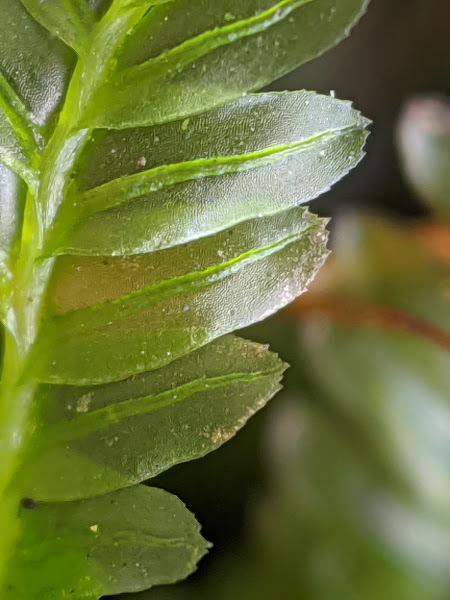Rhizogonium
Dioicous. Asexual propagules absent. Tufts on tree ferns, logs, rocks and soil. Stems prostrate or erect, simple, tomentose at base; central strand present. Leaves ovate, oblong-ovate or ovate-lanceolate, often asymmetric at base, distichous, patent, small and scale-like toward stem base, otherwise monomorphic, often decurrent; apex obtuse, acute or acuminate (not in Victoria); costa strong, subpercurrent to excurrent; margin serrate or dentate toward apex with single teeth, plane, with (not in Victoria) or without a distinct border of more elongate cells; laminal cells hexagonal to quadrate, sometimes more elongate at base, smooth; alar cells not differentiated. Pleurocarpous, perichaetia and perigonia near base of stem. Capsules erect to pendent, symmetric or slightly asymmetric, obloid, cylindric or urceolate, with an annulus. Calyptra cucullate, smooth, glabrous. Operculum rostrate. Peristome double; endostome 1/3–½ length of exostome, with a high basal membrane; cilia present.
Seven species shared between Malesia to Fiji, New Zealand, Central and South America and eastern Australia (Frahm et al. 2003); two species in Victoria.
 Spinning
SpinningFrahm, J.-P.; Borchardt, P.; Schramm, M.; Sonntag, M. (2003). Synopsis der Gattung Rhizogonium (Musci, Rhizogoniaceae). Tropical Bryology 24: 129–137.


